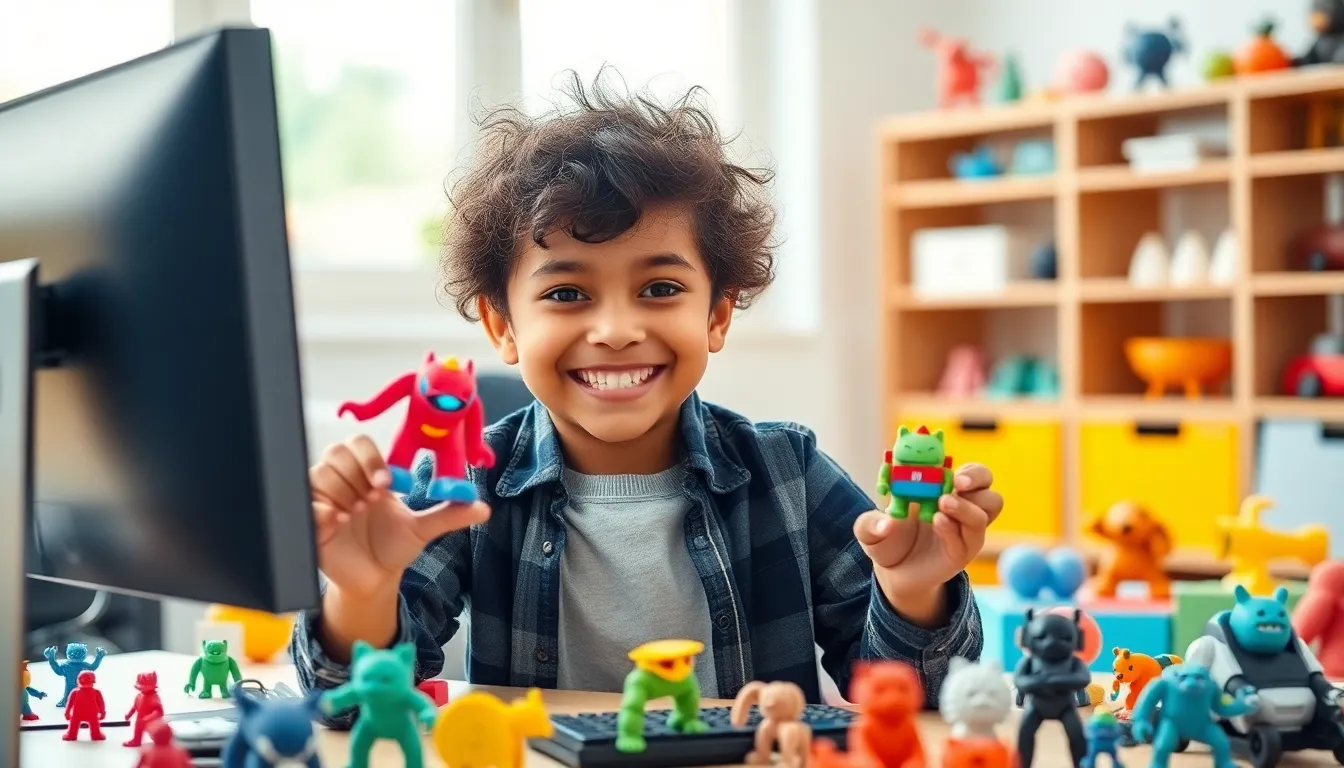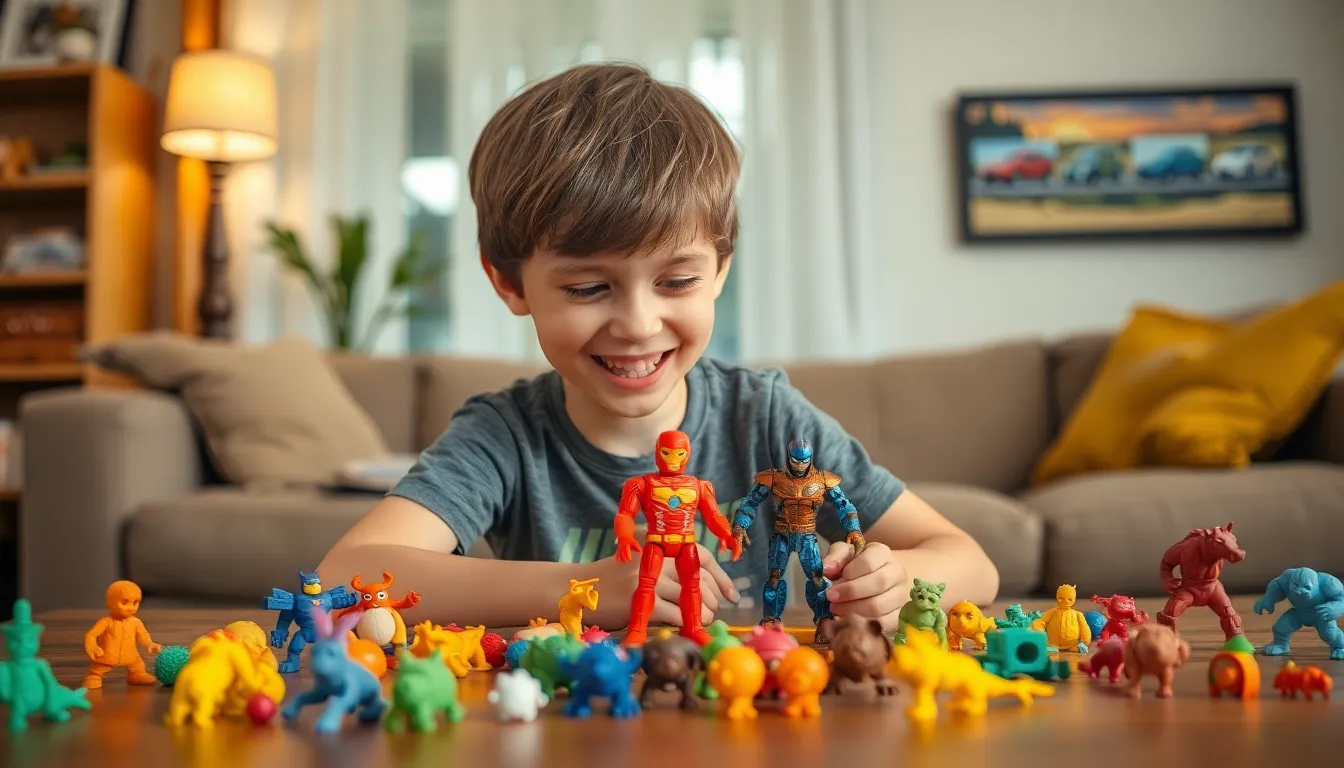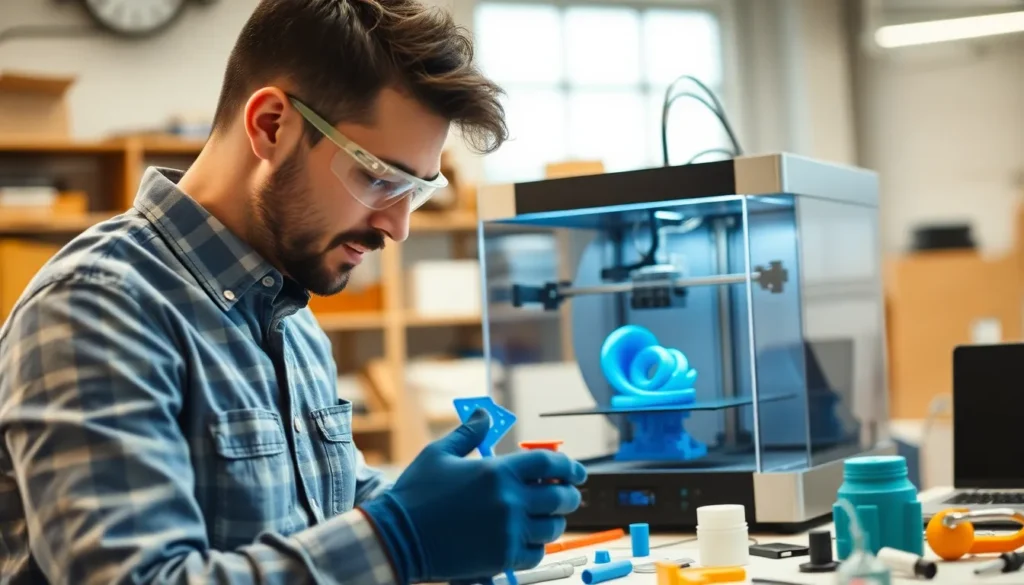Table of Contents
ToggleImagine a world where every child’s wildest dreams can come to life right in their living room. With 3D printing technology, that world isn’t just a fantasy; it’s a reality! Gone are the days of searching high and low for that elusive toy. Now, anyone can whip up a custom creation with just a few clicks.
Overview of 3D Print Toys
3D print toys represent a revolution in playtime experiences. Customization stands at the forefront, allowing creators to design toys tailored to individual preferences or themes. Multiple types of toys can be produced, ranging from action figures to intricate puzzles. Each creation can incorporate personal elements, enhancing engagement and fostering creativity.
The process of making 3D printed toys involves three main steps: designing, printing, and finishing. Designers utilize software to create a digital model, ensuring every detail aligns with the intended vision. Once satisfied with the design, the actual printing begins, with materials such as PLA or ABS used for durability. After printing, finishing touches like sanding or painting can occur, elevating the toy’s aesthetic appeal.
Utilizing 3D printing technology also presents economic advantages. Cost savings arise from reduced need for mass production, storage, and shipping. Families and schools can access unique toys without overspending. Community sharing can manifest through online platforms, enabling users to exchange designs or finished products.
Safety remains a priority in the creation of 3D print toys. Responsible material choices reflect this focus on health and well-being, with many manufacturers now opting for non-toxic options. Parents can feel secure knowing their children play with safe, durable, and enjoyable toys crafted uniquely for them.
Connecting innovation with imagination, 3D print toys not only elevate playtime but also foster a culture of creativity and exploration. Embracing this technology can spark a new wave of interactive learning and engagement within households and communities.
Benefits of 3D Printing Toys

3D printing toys offers significant advantages, making playtime more enjoyable and environmentally friendly.
Customization Options
Customization stands out as a primary benefit of 3D printing toys. Children can design toys that reflect their unique interests or favorite characters. Availability of online design platforms enables users to create personalized models effortlessly. Parents and educators can incorporate learning elements by adjusting toy features. These tailored toys foster creativity and imagination, elevating the play experience.
Sustainability Aspects
Sustainability plays a crucial role in the benefits of 3D printed toys. Manufacturers often use eco-friendly materials like PLA, derived from renewable resources. This reduces reliance on petroleum-based plastics associated with traditional toys. Local production cuts down on shipping emissions, contributing to a lower carbon footprint. Additionally, producing toys on demand minimizes waste, addressing environmental concerns. Overall, 3D printing aligns with sustainable practices while benefiting communities.
Popular Types of 3D Print Toys
3D print toys come in a variety of forms, catering to diverse interests and age groups. Notably, action figures and educational toys stand out as two popular categories.
Action Figures
Action figures capture the imagination with their unique designs and personalization options. Creators can modify characteristics like size, pose, and accessories, enabling a truly custom experience. For example, fans can recreate their favorite superheroes or invent entirely original characters. Many online platforms support users in designing these figures, merging art with technology. Also, the affordability of 3D printing makes producing multiple iterations achievable, allowing for testing different designs without significant expense. Ultimately, these personalized action figures inspire creativity and offer a truly interactive play experience.
Educational Toys
Educational toys benefit greatly from 3D printing by promoting learning through play. Such toys often integrate concepts in science, mathematics, and engineering, turning complex ideas into interactive experiences. Designers can create puzzles, building blocks, and anatomy models that enhance understanding. Children engage actively with these tools, as they can manipulate them for hands-on learning. Furthermore, parents and educators appreciate the educational value, supporting various developmental skills. Customization allows developers to align toys with specific learning objectives, ensuring relevance. Overall, educational 3D print toys make learning enjoyable while fostering a curious mindset.
How to Get Started with 3D Print Toys
Getting started with 3D print toys involves a few essential steps. Understanding these steps can make the process accessible and enjoyable.
Choosing the Right Printer
Selecting the right printer affects the quality of the toys. FDM printers are popular for beginners due to their affordability and ease of use. They work well with materials like PLA and ABS. For those seeking intricate designs, resin printers offer more detail but come with higher costs and complexity. Evaluating specific needs ensures the selected printer meets project requirements. Brands like Creality and Prusa provide a range of options catering to different skill levels and budgets.
Selecting Materials
Material choice influences durability and safety. PLA is a commonly used material for children’s toys due to its non-toxic properties and easy printing characteristics. ABS also provides sturdiness, making it suitable for more durable toy designs. Considerations should include the toy’s intended use and the age of the child. Eco-friendly options are available, supporting sustainability efforts. Additionally, exploring specialty filaments can enhance the play experience, making toys more colorful or tactile. Prioritizing material safety and environmental impact can lead to better choices for both families and educators.
Tips for Designing 3D Print Toys
Start with a clear concept. Knowing the type of toy desired guides the design process effectively. Consider the toy’s functionality and target age group, as this ensures suitability.
Select user-friendly design software. Programs like Tinkercad or Blender streamline the creation process for novice and experienced designers alike. Explore pre-existing models online for inspiration and customization ideas.
Prioritize ease of printing. Designs should incorporate features like rounded edges and supported structures. This reduces printing errors and enhances durability.
Test different sizes. Experimentation lets designers find the most appealing and manageable dimensions for the target audience. Adjusting scale can also make toys easier for children to manipulate.
Focus on vibrant colors. Using colorful filaments enhances visual appeal, capturing children’s attention. Engaging hues can stimulate creativity and playfulness.
Consider incorporating interactivity. Elements like movable parts or customizable features can enrich the play experience significantly. Adding these characteristics encourages imaginative engagement.
Lastly, ensure safety standards are met. Using non-toxic materials like PLA supports healthy play environments. Compliance with safety guidelines fosters confidence for parents and educators.
3D print toys are reshaping how children engage with play. This innovative technology not only fosters creativity but also makes unique designs more accessible. With the ability to create customized toys tailored to individual interests, children can explore their imaginations in ways previously unimaginable.
The advantages extend beyond creativity to sustainability. By using eco-friendly materials and local production methods, families can reduce their environmental impact while enjoying safe and durable toys. As 3D printing continues to evolve, it promises to enhance playtime experiences and support educational growth, making it an exciting frontier for both parents and children.




